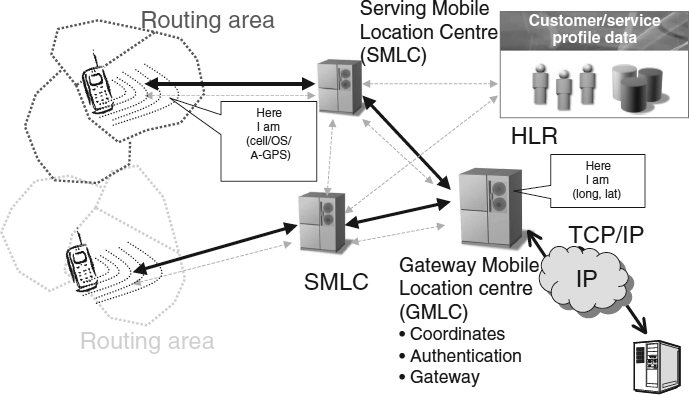13.5 INTERFACING LBS APPLICATIONS WITH THE CELLULAR NETWORK
The remaining issue is how to get the location information into our location-enabled application. We have previously discussed accessing location information via Web Services APIs like OSA of 3G, which is an implementation of Parlay (Parlay X being the Web Services presentation).

Figure 13.18 Location-based services architecture in the cellular network.
Figure 13.18 shows the basic architecture of the location infrastructure in a cellular network. Just as we saw that clusters of adjacent cells formed routing areas for SGSN data concentration, there are similar routing areas of the network, each served by a SMLC. This is responsible for gathering the actual location measurements from devices and for the presentation of this information in a useful and agreeable form to the higher entities in the network, including, eventually, our location-enabled applications, J2EE or not.
The information from the SMLCs is concentrated into a Gateway Mobile Location Centre (GMLC), which is a secure boundary point for external entities to attain mobile location information about a particular subscriber. Apart from providing the main interface with the outside world, the GMLC makes location information available in terms of subscriber ID and not device ID; hence, why it has a relationship with the Home Location Register (HLR), which stores ...
Get Next Generation Wireless Applications: Creating Mobile Applications in a Web 2.0 and Mobile 2.0 World, 2nd Edition now with the O’Reilly learning platform.
O’Reilly members experience books, live events, courses curated by job role, and more from O’Reilly and nearly 200 top publishers.

